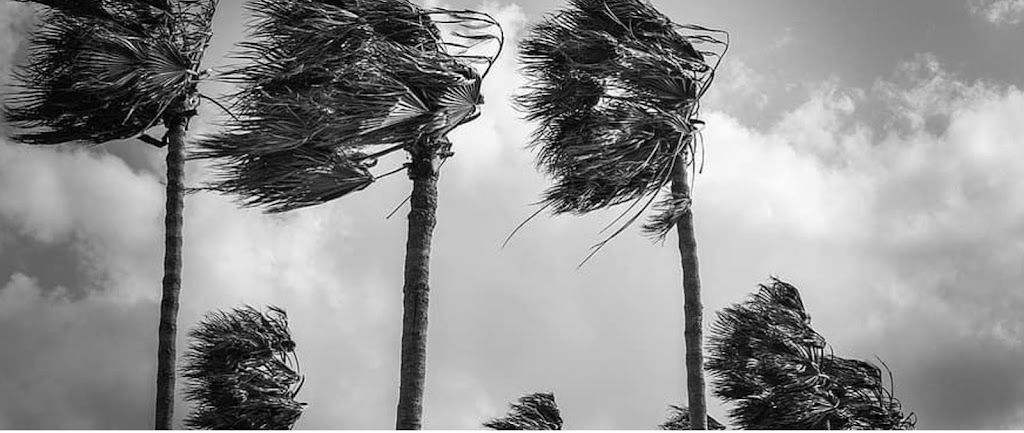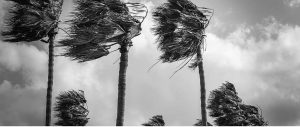|
Stock up on supplies. Consult and plan with your family. Get organized and ready for an emergency. Stay informed so you’ll know when a storm is coming. |
|
1 |
HOPE FOR THE BEST AND PREPARE FOR THE WORST The beginning of the season is the best time to develop your emergency response plans. Make sure you have supplies to last at least two weeks. Create a disaster kit to take with you in case of evacuation:
|
|
2 |
SOME TERMS TO KNOW TO BETTER UNDERSTAND THE DANGER Tropical Wave A cluster of clouds and/or thunderstorms with little or no circulation* or strong wind. Tropical Depression An organized system of clouds and/or thunderstorms with some circulation at the surface; highest winds less than 39 mph. Tropical Storm An organized system of strong thunderstorms with stronger circulation than tropical depressions. The highest wind speeds are 39-73 mph. These storms can accelerate quickly when they reach tropical storm strength and become hurricanes. Storms are named when they reach tropical storm strength. Hurricane An organized system of strong thunderstorms with very strong, pronounced circulation; winds of 74 mph or more. Tropical Storm or Hurricane Watch Tropical storm or hurricane conditions pose a possible threat to the area within 36 hours. Tropical Storm or Hurricane Warning Tropical storm or hurricane conditions are expected |
|
3 |
DECIDE WHERE YOU WILL GO IF YOU MUST EVACUATE. Prepare in advance to evacuate inland to a low-rise hotel, motel, or a friend’s or relative’s home outside the storm area. Make a list of important phone numbers and pack them in your disaster kit. Plan your route and an alternate and have a current paper map of the route on hand. Notify family and friends of your plans. If you need special consideration to evacuate (because of age, physical disability, medical needs, etc.), register in advance with your county’s civil defense and office of emergency management. Discuss emergency plans with your agency representative and your physician if you receive home health care or depend upon electric life-support equipment. Make arrangements with a hospital if necessary. KEEP EMERGENCY EQUIPMENT ON HAND. Buy and store materials such as plywood and duct tape NOTE: Once a hurricane watch or warning has been issued, do not attempt to trim trees and/or shrubs. Trash pickup will be suspended, and your trash can become dangerous missiles in the storm’s high winds. |
|
4 |
MAKE PREPARATIONS FOR THOSE WITH SPECIAL NEEDS. If you wish to help elderly friends or relatives evacuate, follow these steps: Plan when you will secure their property and pick them PLAN AHEAD FOR YOUR PET’S SAFETY. A little research and planning can save a lot of stress when a storm is forming. Look into options for your pets now. Most shelters do not accept pets. Identify those that do ahead of time. Boarding kennels, veterinarians, friends, relatives, or motels that allow pets are possibilities. Call your local Humane Society or your veterinarian for AS THE STORM APPROACHES. Pay attention to the latest weather updates on local radio and television stations, or online. If a storm is approaching or has already affected your town, your neighborhood stores will evaluate when to close and reopen based on the needs of the community and the safety of our associates. Remember, mobile homes and factory-built or prefabricated homes are unsafe in hurricane conditions, no matter how firmly they may be attached to the ground. High-rise apartments and condos must also be evacuated because they are susceptible to conditions that may cause fires during high winds when it’s impossible to get emergency help. Hurricane winds are stronger at higher elevations. |
|
5 |
BE PREPARED FOR AN EVACUATION. An evacuation order may come from local officials and/or the governor and will be broadcast by zone number. Remain calm, put your emergency plan into action, and ready your family and home. Red Cross shelters are available for people who have nowhere else to go. Do not go to a shelter until you hear an announcement that it is open. Prepare emergency water storage: Sterilize bathtubs, jugs, cooking utensils, and containers. Scrub thoroughly, sponge with bleach, rinse and let dry; fill with water. Leave early to avoid traffic or early flooding. Turn off electricity, water, and gas before you leave. Unplug major appliances. Remember your disaster kit. Pack emergency supplies in your vehicle and leave immediately on your preplanned route. Clear your yard of loose objects such as bicycles, lawn furniture, and trash cans. Anchor objects (no matter how heavy or large) cannot be moved inside. Secure your boat. Lash it to your trailer securely, let the air out of the trailer tires, and attach it to something sturdy on the ground. If you keep your boat in a marina, check your contract; some require that you move it when a hurricane watch is issued. You are responsible for your boat. Close all windows and doors, and board wherever possible. Taping glass will not prevent breakage. Do not drain your pool completely; lower the water level by 6 to 12 inches and add extra chlorine to prevent contamination. Turn off electricity to equipment and cover the pool pump, if exposed. |
|
6 |
Store documents and valuables in waterproof containers and secure them in the highest possible spot. Turn your refrigerator and freezer to the coldest setting, opening only when absolutely necessary. Freeze water in plastic jugs and containers, and use them to fill empty spaces between refrigerator contents to keep food cool. AFTER A STORM. Don’t expect to return home immediately. Access to damaged areas will be controlled due to rescue and repair operations. Avoid driving; leave the roads clear for emergency vehicles. Report dangling electrical wires and any broken water, gas, or sewer lines to your local utility department. Do not report individual interruptions in power, water, or phone service. Enter your home with caution. Ceilings, windows, and walls may have been damaged or weakened during the storm. Beware of snakes, insects, or other animals that are driven to high ground by floodwater. Never use a generator inside your home or garage, even if doors and windows are open. Use generators only |
|
7 |
WATER SUPPLIES MAY BE CONTAMINATED. The public health department may issue a boil-water order for the first 72 hours immediately following the hurricane. Use stored water for drinking or cooking until further notice. STAY INFORMED. Listen to your local radio stations for emergency medical, food, and housing assistance instructions. Do not call 911 except for emergencies or life-threatening situations. If a storm has affected your community. |
|
8 |
MAKE SURE YOU ALWAYS HAVE THESE ITEMS ON HAND. Throughout hurricane season, take a look around your home. Make sure you have these emergency supplies always available. Two-week supply of medicines and/or prescriptions First aid supplies Extra clothing, eyeglasses, etc. Toiletries Ice chest and ice Quiet games, books, playing cards Portable radio/flashlights and clock with extra batteries Fire extinguisher |
|
9 |
STOCK NONPERISHABLE FOODS.
Bottled water (1 gallon per person per day and 1 gallon per pet per day) Powdered or individually packaged drinks Crackers, cereals, cookies, snacks Canned meats, fruits, vegetables, soups, puddings
Special dietary foods
Peanut butter and jelly
Powdered or shelf-pack milk
Dried fruit
Instant coffee and tea
Sugar, powdered creamer, salt, and pepper Pet food
Baby food and formula
Source: redcross.org
For information regarding evacuation zones and emergency shelters, tune in to your local television or radio station, or call your local Red Cross or your country emergency management office. You can also find local and emergency information online.


 Facebook
Facebook
 X
X
 Pinterest
Pinterest
 Copy Link
Copy Link




